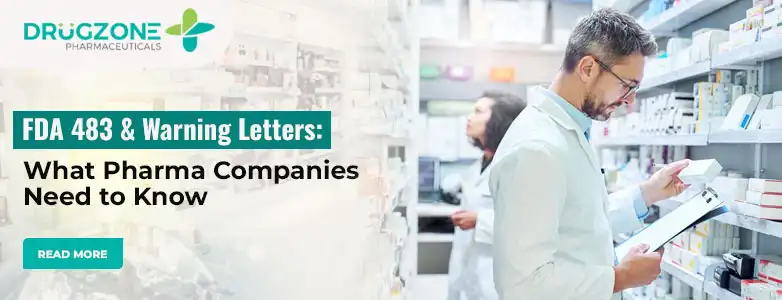
Posted On: September 21, 2024
A Beginner's Guide to GS1 Standards for Pharmaceutical Companies
GS1 standards are a set of global guidelines that help pharmaceutical distributors consistently identify, capture, and share information across the supply chain.
While the DSCSA (Drug Supply Chain Security Act) requires the pharmaceutical industry to enhance the security of the drug supply chain, GS1 standards play a crucial role in meeting the DSCSA requirements.
For example, the DSCSA mandates the use of unique product identifiers for tracking and tracing prescription drugs. GS1 standards provide the framework for these identifiers, primarily through the use of GS1 barcodes like the Global Trade Item Number (GTIN).
The Main Components of GS1 Standards
Here are the fundamental components of GS1 standards-
1. Global Trade Item Number (GTIN)
The GTIN can identify items at various hierarchy levels, such as beaches, cases, and pallets. It's used to manage products in databases, link physical goods to electronic information, and track products throughout the entire supply chain.
2. EAN/UPC Barcodes
EAN (European Article Number) and UPC (Universal Product Code) barcodes are used for encoding GTINs on consumer products.
These barcodes enable quick and accurate scanning at point-of-sale (POS) and support efficient inventory management by providing a standardized method of identifying products.
3. Global Location Number (GLN)
The GLN identifies parties and locations within the supply chain. It provides a unique identifier for different entities, such as pharmaceutical distributors, warehouses, and retail locations. This helps with better transaction processing, logistics management, and regulatory compliance.
4. Global Product Classification (GPC)
GPC classifies products by their essential characteristics. It helps in grouping products in a standardized way, enabling better data synchronization, improved search functionality, and regulatory reporting.
5. 2D Barcodes
2D barcodes can encode a large amount of information in a small space.
In the pharmaceutical industry, GS1 DataMatrix barcodes are frequently used to hold GTINs, batch numbers, expiration dates, and sometimes serial numbers, enhancing traceability and patient safety. They also facilitate web-enabled functionalities through GS1 Digital Link.
6. Serial Shipping Container Code (SSCC)
SSCC is used to uniquely identify logistic units such as pallets or containers. It helps in tracking and managing these units throughout the supply chain. SSCC also enables efficient shipping and receiving processes and enhances traceability.
7. EPC/RFID
EPC (Electronic Product Code) in conjunction with RFID (Radio Frequency Identification) tags allows for the automatic and unique identification of products.
This technology enhances visibility, reduces errors, and improves inventory management within the supply chain.
8. GS1 Global Data Model
This model simplifies product data requirements by providing a single, consistent view of product data across the entire supply chain.
It ensures that all trade partners have access to the same, accurate product information, which improves data quality and reduces complexity.
9. GS1 DataBar Barcode
GS1 DataBar barcodes can encode more information than the traditional EAN/UPC barcodes, such as batch numbers and expiration dates. They are particularly useful for small products where space for labeling is limited.
10. Global Data Synchronization Network (GDSN)
GDSN is an internet-based network of data pools that allows trading partners to share and synchronize product master data automatically.
This ensures that all parties have the most up-to-date and accurate product information, reducing errors and improving supply chain efficiency.
11. EPC Information Services (EPCIS) & Core Business Vocabulary (CBV)
EPCIS and CBV standards facilitate the sharing of information about the movement and status of products across the supply chain. This includes data on what happened, where, why, and when, thus enhancing traceability and visibility.
12. GS1 Digital Link
This standard enables the encoding of URLs into barcodes or RFID tags along with GTINs and other identifiers. This provides easy access to additional information or services, such as product details, authentication, and recalls.
13. 1D Barcodes for Logistics
1D barcodes, such as Code 128 and ITF-14, are used for labeling logistic units. These barcodes help in tracking these units as they move through the supply chain, improving efficiency and traceability.
14. EANCOM
EANCOM is a subset of the UN/EDIFACT standard and is used for sending electronic business messages.
This includes transactions like orders, invoices, and shipping notices, enabling efficient and error-free business communications.
15. GS1 XML
GS1 XML is used to send electronic business messages, such as orders, invoices, etc. It facilitates seamless data exchange between trading partners, improving operational efficiency and data accuracy.
We Believe that Safety Follows Compliance
Drugzone deeply recognizes the importance of complying with GS1 standards, as they are essential for ensuring the accuracy, traceability, and safety of pharmaceutical products throughout the supply chain.
With thorough compliance, we enhance our operational efficiency, facilitate seamless interoperability with trading partners, and ultimately uphold the highest levels of product integrity and patient safety!
FAQs
Q. Why use SSCC in pharmaceutical logistics?
SSCCs (Serial Shipping Container Codes) help track and trace shipments, improve inventory accuracy, and streamline warehouse operations.
Q. How do GTINs and EAN/UPC barcodes improve the pharmaceutical supply chain?
GTINs and EAN/UPC barcodes simplify product identification, making scanning fast and accurate. This improves inventory tracking, ensures products are genuine, and meets regulatory standards, all of which streamline supply chain operations.
Tags
Latest Posts
Similar Posts
-

Top Challenges in Achieving DSCSA Interoperability
-

FDA’s Risk-Based Inspection Model: What It Means for You
-

FDA 483 and Warning Letters: What Pharma Companies Need to Know
-

The Role of DSCSA in Enhancing Drug Clinical Trials Regulations
-

The Impact of DSCSA on Drug Importation and Exportation Regulations



